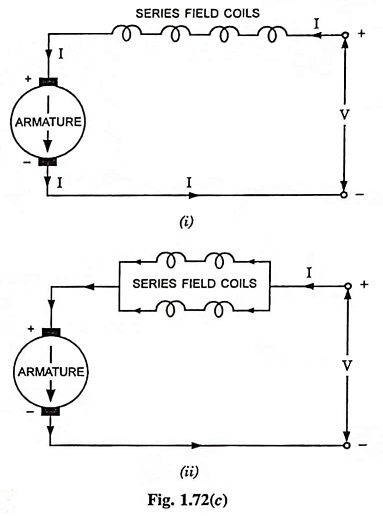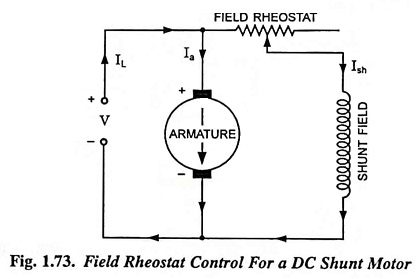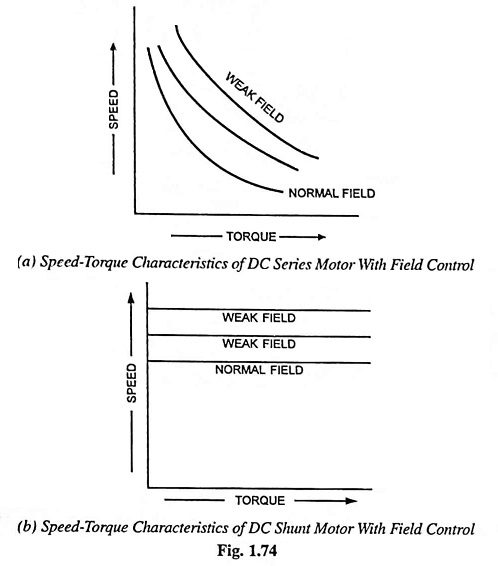Paralleling Field Coils for DC Series Motor:
In this Paralleling Field Coils method, used in fan motors, several speeds can be obtained by regrouping of field coils, as illustrated in Fig. 1.72 (c).
In case of dc shunt motors the flux can be varied by inserting a variable resistance in series with the field winding (Refer to Fig. 1.73). Since this resistance has to carry only a small current, so it is made up of slide-wire type of resistor to have continuously variable speed over the range.
Since the flux can be only decreased (not increased) so the speeds only above normal one can be obtained by this method. The speed is minimum at the maximum value of flux and depends upon the design of the field and its saturation point. The speed is maximum at the minimum value of flux, which is governed by the demagnetizing effect of armature reaction on the field as at higher speeds the motor tends to be unstable and difficulties in commutation arise. The high speed is also restricted due to mechanical considerations as the centrifugal forces are set up at high speeds.
Speed variation by this method is limited to ratio of 4 or 5 to 1. Creeping speeds cannot be obtained by this method. The power output being proportional to TN or VIa remains constant. This method is, therefore, suitable only where power of the load remains constant. This paralleling field coils for speed control of dc series motor method is very simple, convenient and most economical and is, therefore, extensively used in electric drives. The power wasted in the controlling resistance is very little, field current being very small. This method of speed control is independent of load on the motor and permits the remote control of speed.
The speed-torque characteristics obtainable with this paralleling field coils for speed control of dc series motor method are given in Fig. 1.74.


